The Azores island chain sits atop one of the Earth’s most active volcanic hotspots, where nine inhabited islands rise from the Atlantic Ocean some 900 miles west of Portugal. The dramatic geologic landscape offers an abundance of natural thermal activity that has been attracting travelers for centuries. The same volcanic energies that formed these islands continue to be at work, heating subsurface water sources that rise to the surface as medicinal hot springs around the landscape.
Each island in this Atlantic paradise boasts its own array of thermal pools, from natural secluded springs hidden in wooded valley bottoms to resort complexes featuring mineral-rich waters. What follows is a rundown of 19 locations on the Azores islands where you can immerse yourself in naturally volcanic-heated springs.
Furnas
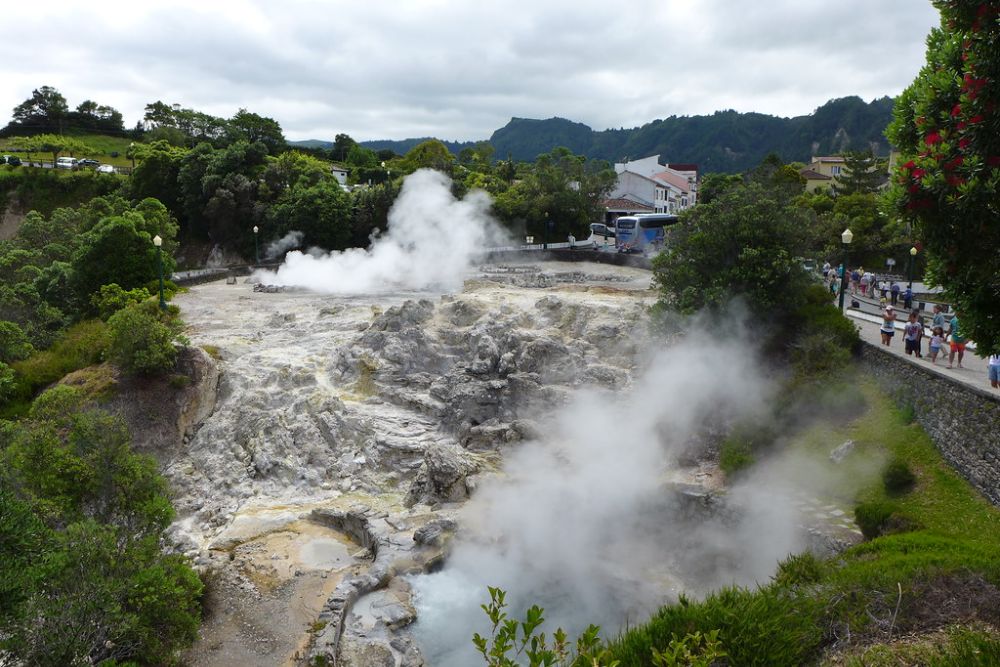
Furnas is the Azorean thermal activity crown jewel, with dozens of hot springs peppering this old crater volcano. The town sits in a caldera where subterranean heat surfaces in an otherworldly landscape of churning pools, steaming fumaroles, and mineral-rich springs.
Terra Nostra Park contains the most famous thermal pool—a gigantic iron-rich basin that maintains a constant temperature of around 104°F year-round. Even the local restaurants cook traditional “cozido” stew by burying pots in the volcano-heated earth for six hours.
Caldeira Velha
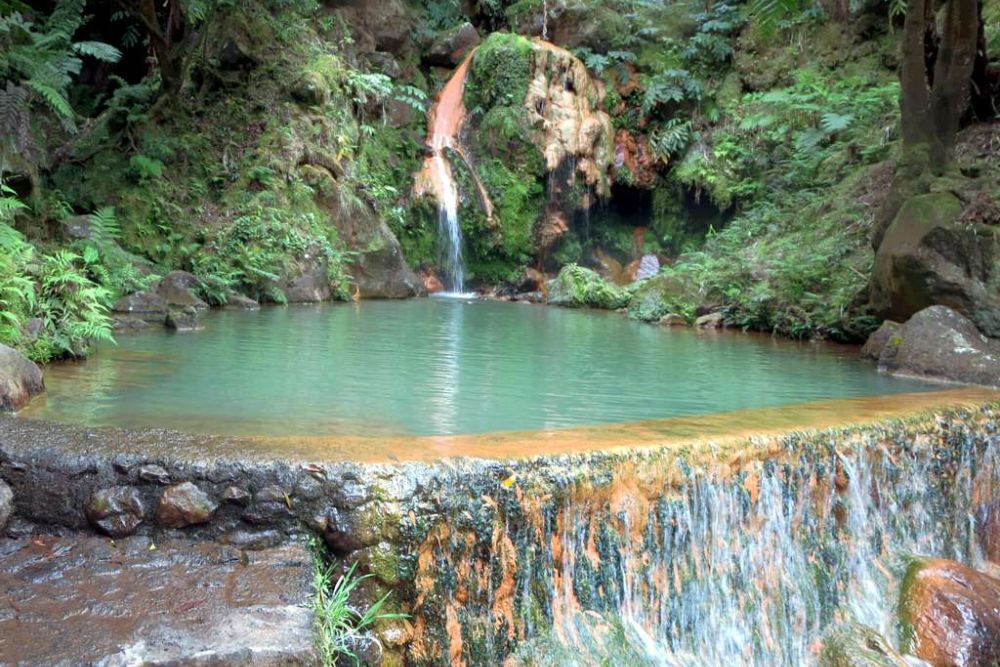
This natural hot spring complex is found on the picturesque route from Ribeira Grande to Lagoa do Fogo, surrounded by tropical foliage. The main pool consists of 100°F temperatures, and there are smaller cascade pools offering varying degrees of heat for individual tolerance. The mineral steam is infused with ancient ferns and other exotic plant life—a jungle-like setting that appears to take the visitor back in time to the prehistoric period.
The iron in these waters gives them a strange orange color, though locals swear to their medicinal properties for joint pain and skin conditions.
Like Travel Pug’s content? Follow us on MSN.
Ponta da Ferreria

Ponta da Ferreria offers one of the strangest thermal experiences in Europe—hot springs that flow directly into the Atlantic Ocean. Seawater is heated by volcanic warmth to comfortable bathing temperatures, creating natural pools in which you can soak as waves churn around you.
Timing is everything here since tides affect the accessibility and temperature of the thermal zones. At low tide, it is magical as warm water combines with cold ocean currents, while high tide can make the area not safe for swimming.
Ribeira Grande Thermal Center
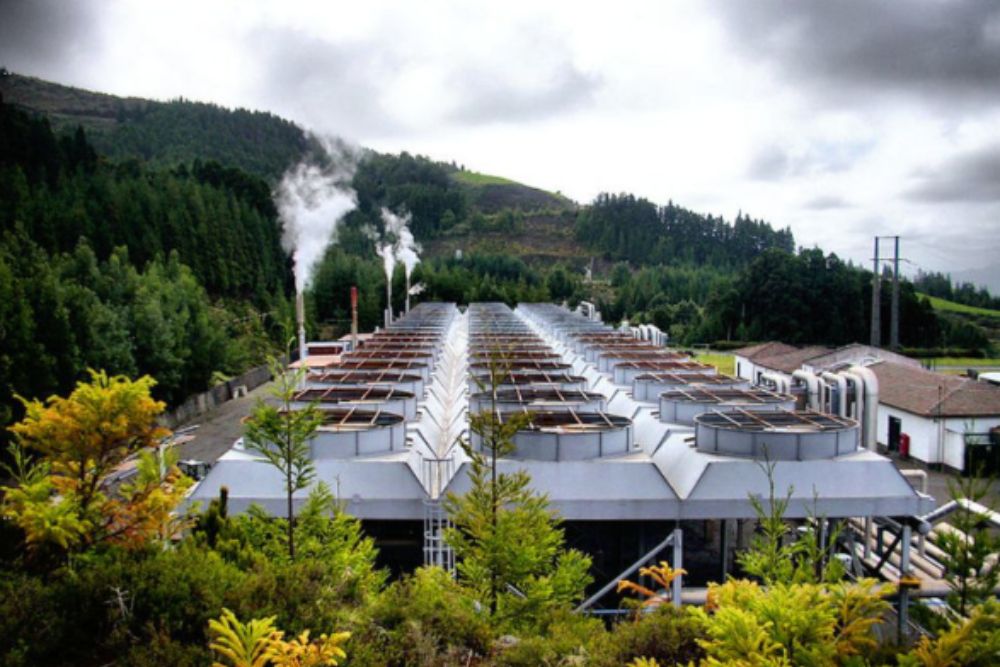
This modern facility harnesses natural geothermal energy to create a sophisticated spa experience in the heart of Ribeira Grande. The center features multiple pools with different mineral compositions and temperatures ranging from 98°F to 106°F. Unlike wilder natural springs, this location offers changing rooms, professional massage services, and carefully monitored water quality.
The thermal waters here contain high levels of sulfur and silica minerals that supposedly benefit circulation and skin health.
Caldeiras da Ribeira Grande
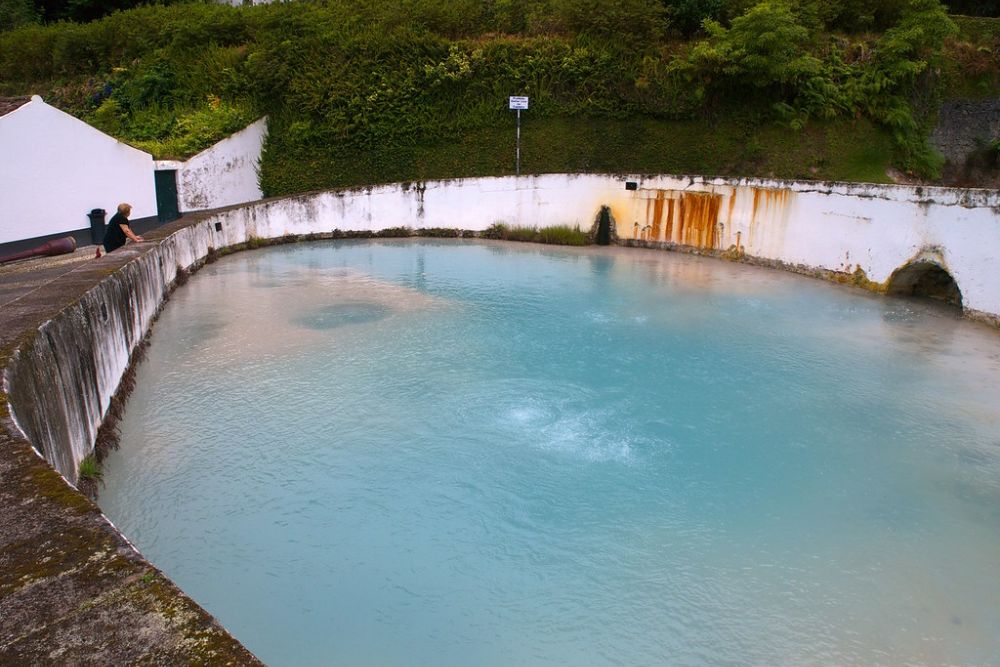
These lesser-known hot springs require a short hike through eucalyptus forests, but they reward visitors with pristine natural pools away from tourist crowds. The springs emerge from rocky outcrops at temperatures around 102°F, creating several small soaking areas surrounded by native vegetation.
Local knowledge helps here since the springs aren’t well-marked, and some pools are too hot for comfortable bathing. The mineral content varies between different springs, with some containing higher sulfur levels that create a distinctive smell.
Like Travel Pug’s content? Follow us on MSN.
Biscoitos Natural Pools
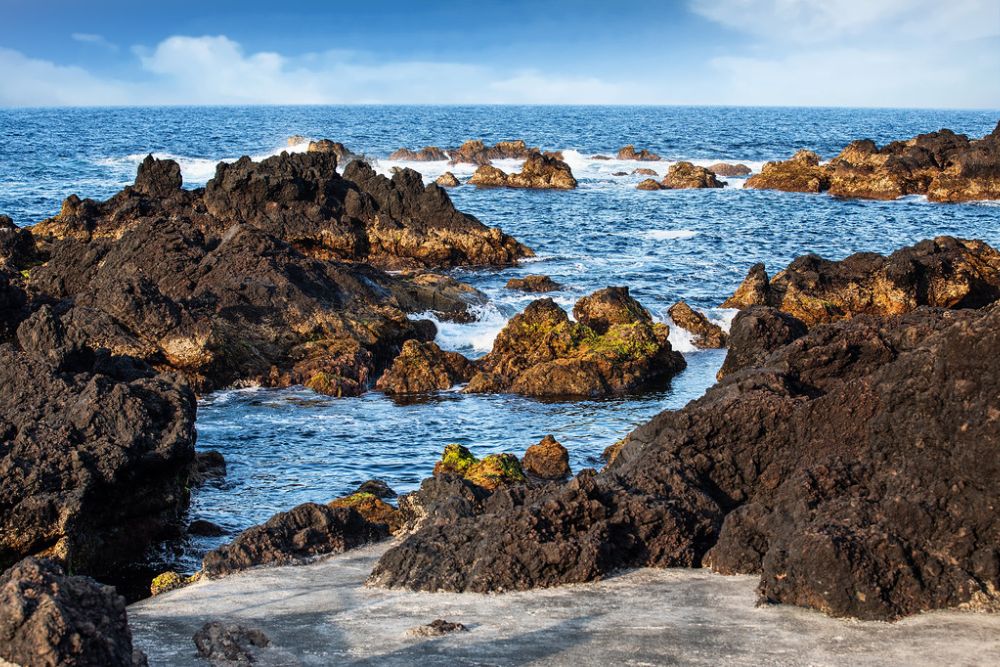
Terceira’s volcanic coastline created these remarkable thermal pools where heated seawater collects in natural rock formations. The pools maintain comfortable temperatures thanks to underwater volcanic vents that warm the Atlantic waters flowing through them. Swimming here feels like being in a natural infinity pool since the rock walls are low enough that you feel connected to the ocean horizon.
Strong surf can make access dangerous during winter storms, but summer conditions are typically perfect for extended soaking sessions.
Praia da Vitória Hot Springs
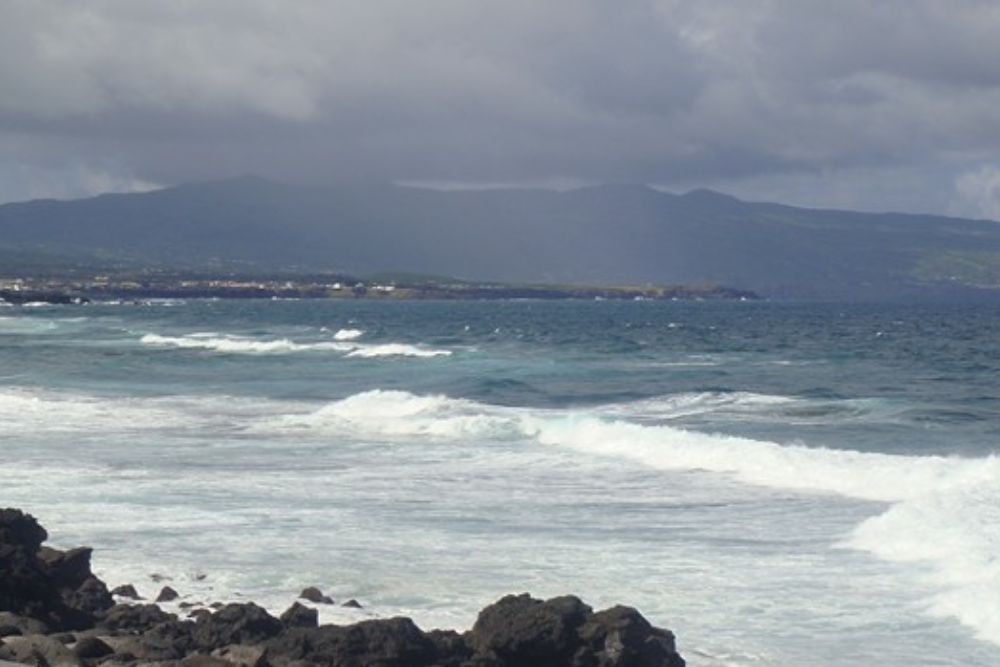
These thermal springs emerge near Praia da Vitória’s harbor, where underground volcanic activity heats freshwater sources that flow toward the sea. The main spring sits in a protected cove where you can enjoy warm water while watching fishing boats come and go from the nearby port.
Water temperatures hover around 99°F throughout the year, making this a popular spot for early morning swims. Local fishermen have been using these springs for decades to warm up after cold nights at sea.
Agualva Thermal Springs
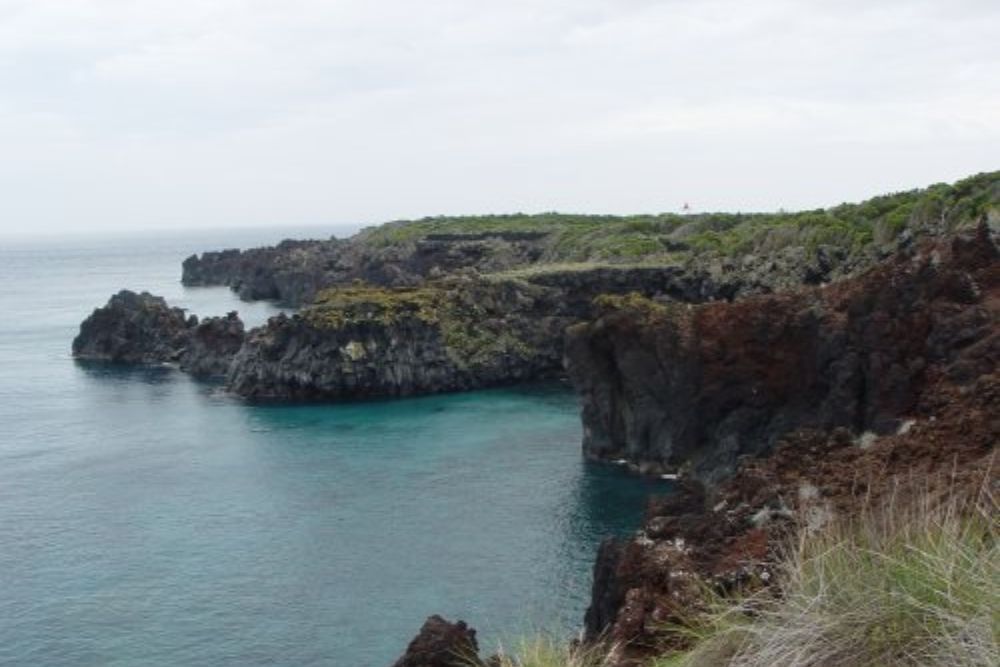
Here is where you will use 2-3 sentences to describe the image/post you want to link them to. This is your excerpt or quick Hidden in Terceira’s mountainous interior, Agualva’s hot springs offer a more secluded experience surrounded by dense forests and rolling hills. The springs maintain steady temperatures around 101°F while flowing through a series of natural rock pools that create perfect bathing spots.
Getting here requires driving narrow mountain roads, but the isolation makes it worth the effort for visitors seeking peace and quiet. The high mineral content gives the water a slightly milky appearance that locals claim helps with muscle soreness.
Like Travel Pug’s content? Follow us on MSN.
Varadouro Natural Pools
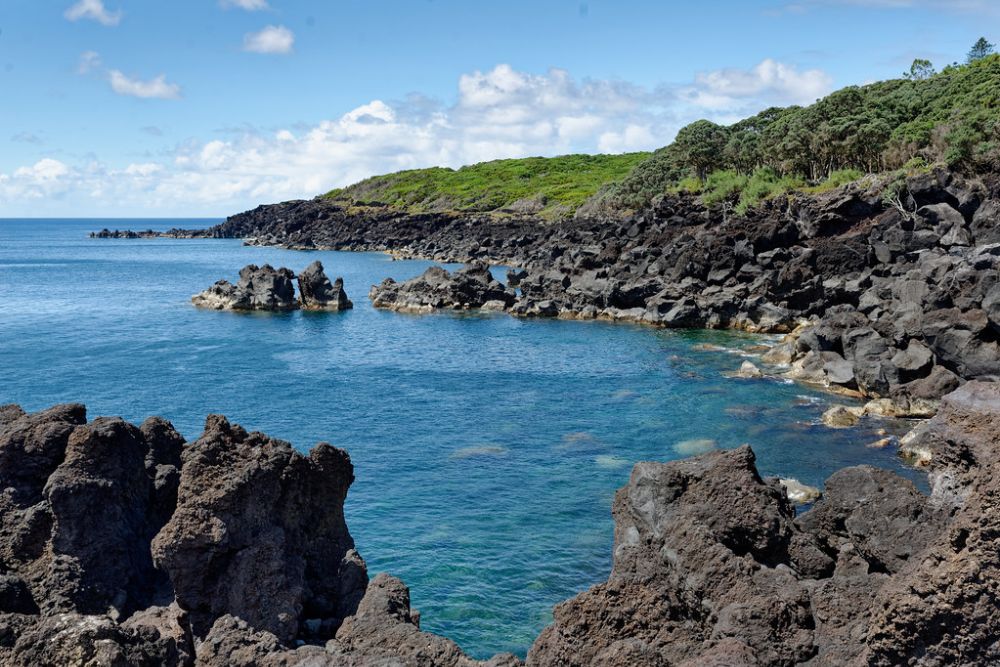
Faial’s volcanic activity created these coastal thermal pools where warm springs mix with tidal waters along the island’s dramatic shoreline. The pools offer varying temperatures depending on tide levels and seasonal volcanic activity beneath the seafloor. During calm weather, the experience rivals any tropical resort, with crystal-clear water heated to perfect bathing temperatures.
The pools sit right next to Varadouro village, making them easily accessible while maintaining their wild, natural character.
Horta Marina Hot Springs

These urban thermal springs flow near Horta’s famous marina—where transatlantic sailors have left colorful murals for decades. The springs emerge from volcanic rock formations right in the harbor area, creating warm pools where you can soak while watching luxury yachts and traditional fishing boats.
Water temperatures stay around 98°F year-round, heated by the same volcanic system that formed Faial’s impressive Capelinhos volcano. The location makes this perfect for a quick therapeutic soak between exploring Horta’s cafés and maritime museums.
Areia Larga Thermal Beach

Pico’s black volcanic sand beach contains hidden thermal springs that warm sections of the shoreline to comfortable bathing temperatures. The springs create warm zones in the sand where you can dig shallow pools that fill with naturally heated seawater.
This unique experience combines beach relaxation with thermal therapy as volcanic heat warms both the sand and incoming waves. The effect works best during low tide when the thermal zones become more concentrated and accessible.
Like Travel Pug’s content? Follow us on MSN.
Lajido Natural Springs
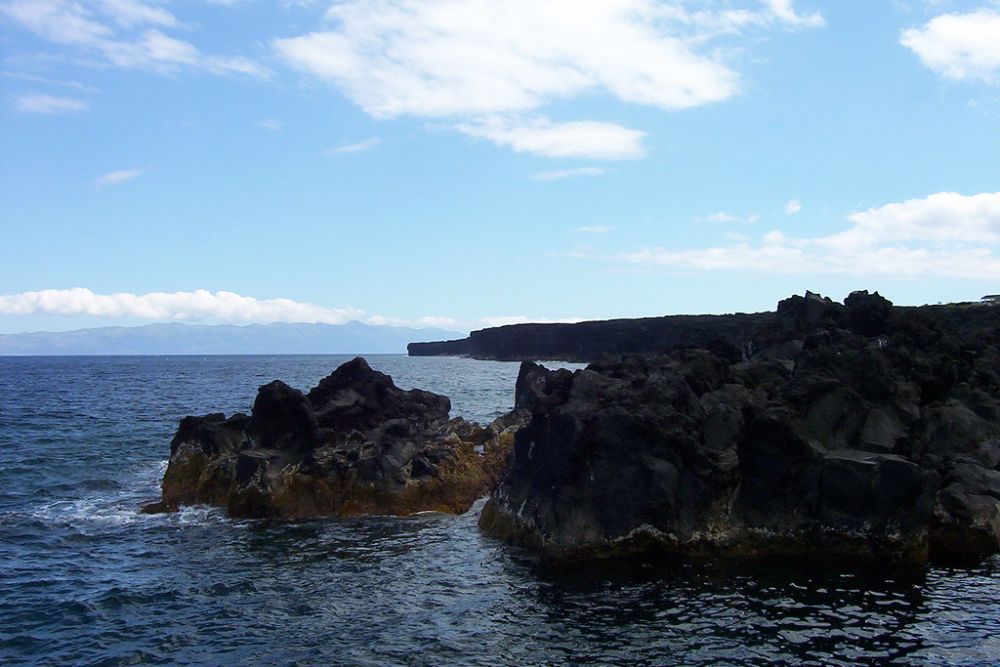
These remote hot springs sit along Pico’s rugged northern coast, where volcanic activity creates warm freshwater pools just meters from crashing Atlantic waves. The springs maintain temperatures around 100°F while offering spectacular views of neighboring Faial and São Jorge islands.
Access requires a challenging hike across ancient lava fields, but the dramatic setting makes it one of the Azores’ most memorable thermal experiences. Local guides recommend visiting during calm weather since the exposed location can become dangerous during storms.
Urzelina Thermal Pools
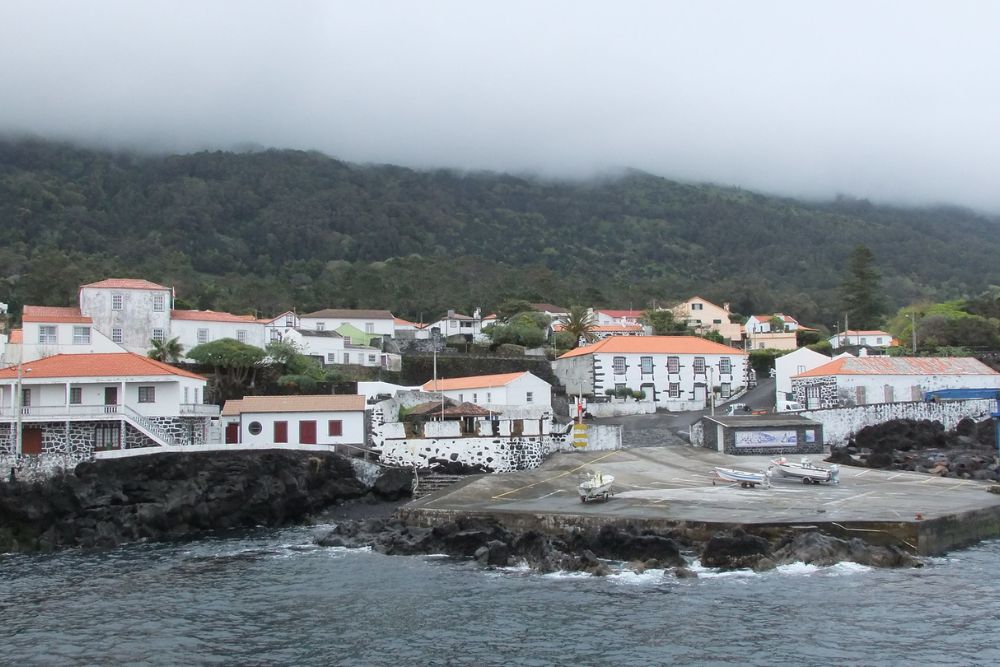
São Jorge’s linear volcanic ridge created these thermal pools near the village of Urzelina, where underground heat sources warm natural rock basins to perfect soaking temperatures. The pools sit in a protected valley surrounded by steep cliffs and lush vegetation that thrives in the mineral-rich steam.
Water temperatures vary between different pools, ranging from a mild 95°F to a toasty 105°F, depending on seasonal volcanic activity. The location offers privacy and tranquility that’s hard to find at more developed thermal sites.
Fajã dos Vimes Springs
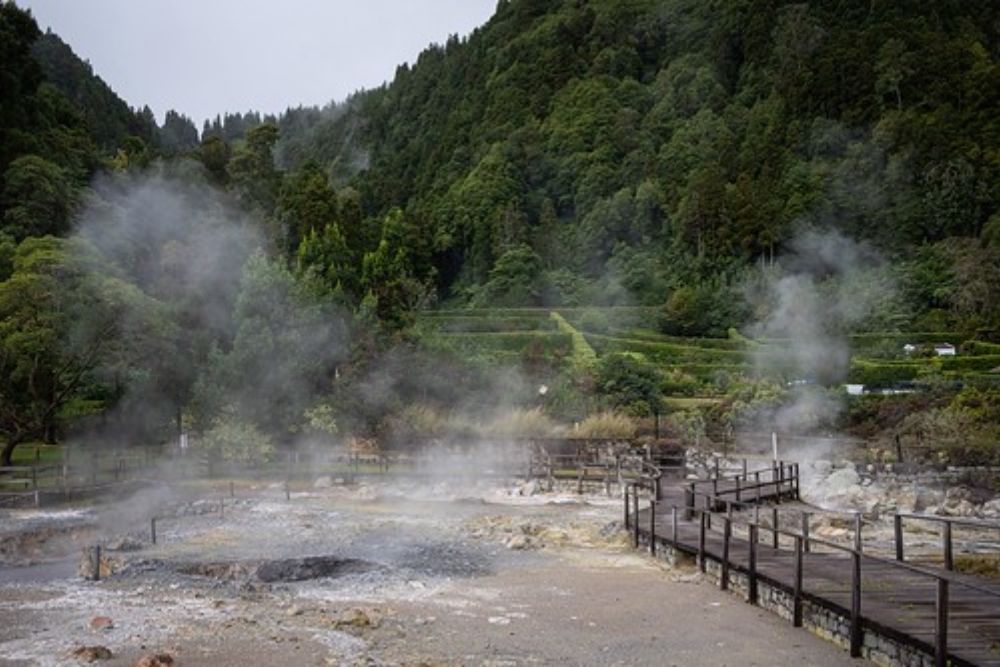
These secluded thermal springs require a steep hike down to São Jorge’s famous “fajãs”—flat coastal areas created by ancient lava flows. The springs emerge where fresh volcanic water meets the sea, creating warm pools with constantly changing temperatures as tides and underground heat fluctuate.
The dramatic setting includes towering cliffs, black sand beaches, and views across the central Azores islands. Timing is important here since high tide can completely submerge the thermal areas.
Like Travel Pug’s content? Follow us on MSN.
Carapacho Thermal Center
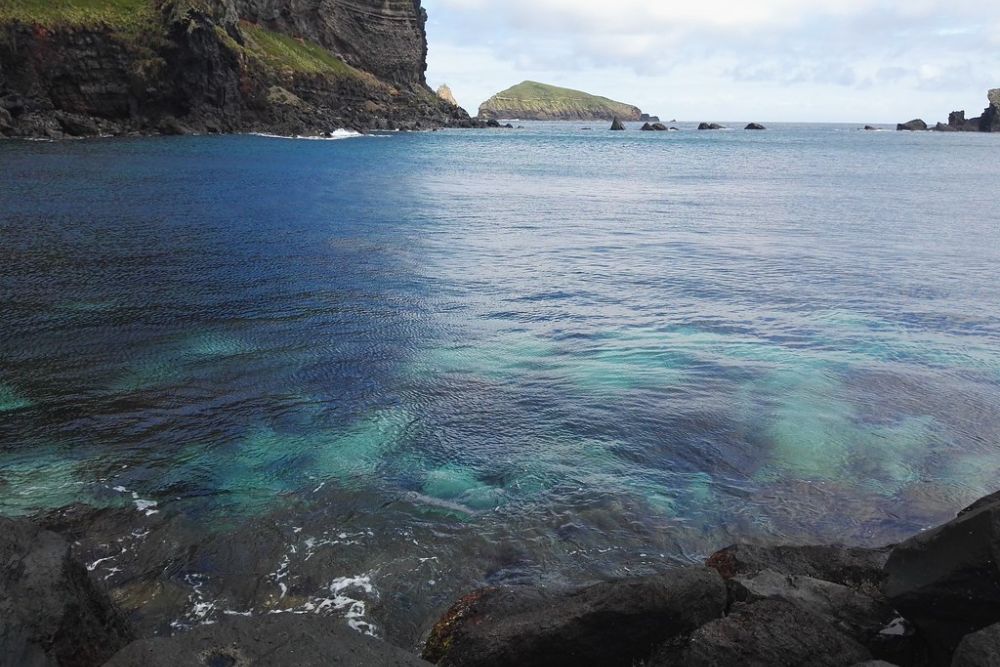
Graciosa’s Carapacho offers one of the Azores’ most developed thermal facilities, featuring naturally heated seawater pools with temperatures carefully controlled for therapeutic use. The center sits right on the coast where volcanic springs flow into tidal pools that have been enhanced with modern amenities.
Multiple pools offer different temperatures and mineral concentrations, while the oceanfront setting provides constant fresh air and scenic views. The facility operates year-round, making it reliable when weather makes other natural springs inaccessible.
Termas do Carapacho Natural Pools

Just outside the developed thermal center, these wild natural pools offer a more primitive experience with the same mineral-rich volcanic waters. The springs create several small bathing areas where temperatures fluctuate based on tidal action and underground thermal activity. Rocky formations provide natural privacy screens while maintaining the dramatic coastal setting that makes Graciosa’s thermal features so special.
Local families have been using these pools for generations, particularly during cooler months when the warm water provides welcome relief.
Ponta do Castelo Springs
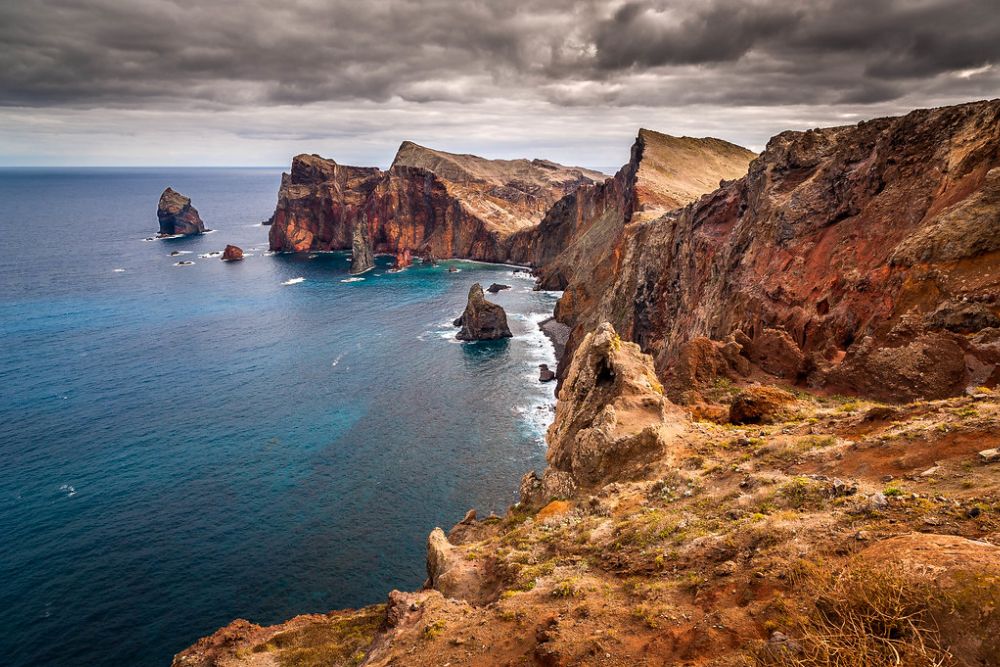
Santa Maria’s oldest thermal springs emerge near Ponta do Castelo, where volcanic activity still heats underground water sources despite the island’s geological age. These springs are less developed than those on younger islands, but they offer warm water that locals have used for centuries.
The pools sit in a quiet coastal area where you can combine thermal soaking with exploring Santa Maria’s unique geology and fossil-rich limestone formations. Water temperatures are generally milder here, usually around 96°F, but the peaceful setting compensates for the lower heat.
Like Travel Pug’s content? Follow us on MSN.
Fajãzinha Coastal Springs

Flores’ remote western location created these thermal springs where volcanic heat meets the wild Atlantic in one of the Azores’ most dramatic settings. The springs emerge near Fajãzinha village, creating warm pools that offer incredible views toward the open ocean, where whales and dolphins often pass close to shore.
Getting here requires careful planning since Flores’ weather can change rapidly, but clear days provide thermal experiences unlike anywhere else in the Atlantic. The water contains unique mineral combinations that reflect Flores’ distinct volcanic history.
Caldeirão Natural Pool
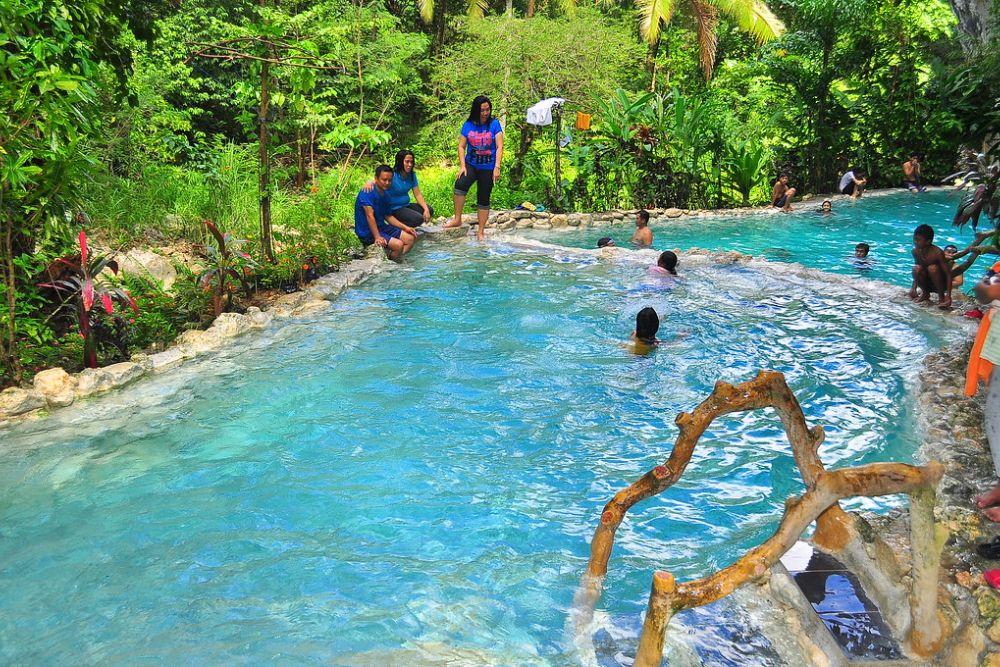
Corvo’s tiny size doesn’t prevent it from offering thermal features, including this natural pool in the island’s volcanic crater lake. The thermal activity here is less intense compared to larger islands, but underground heat still warms sections of the crater lake to comfortable bathing temperatures.
This represents one of the Atlantic’s most unique thermal experiences—soaking in a volcanic crater while surrounded by one of Europe’s smallest and most remote communities. Access depends on weather and local conditions, making each visit feel like a special discovery.
Atlantic Oasis of Volcanic Warmth
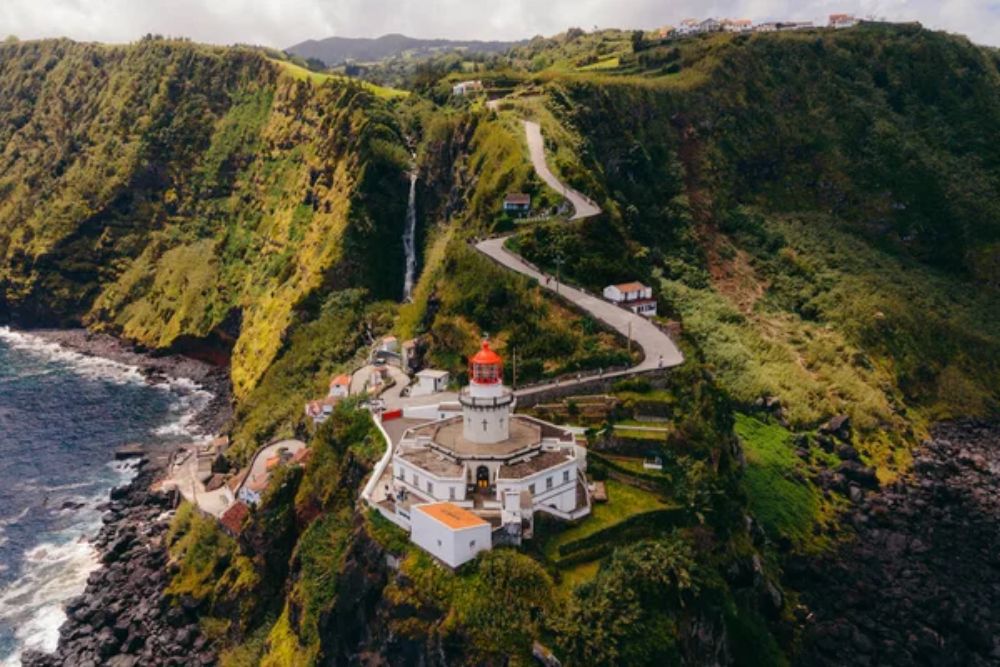
The Azores’ thermal springs represent a remarkable gift from the Earth’s restless interior, where volcanic forces continue shaping these Atlantic islands while providing natural therapy for both locals and visitors. These springs have served island communities for centuries, offering warmth, healing, and gathering places that strengthen social bonds in isolated ocean settlements. The diversity of thermal experiences across the archipelago reflects each island’s unique geological character, from the intense volcanic activity of São Miguel to the gentler warmth found on older islands like Santa Maria.
Modern development has enhanced access to some springs while others remain wild and pristine, ensuring that future generations can experience the same natural wonders that have attracted people to these volcanic islands for over 500 years. Whether seeking therapeutic benefits or simply the pleasure of warm water surrounded by dramatic Atlantic scenery, the Azores’ thermal springs continue their ancient role as oases of comfort in the vast ocean.
More from Travel Pug

- 20 Best Beach Towns in the Carolinas
- 13 Destinations Where Tourists Regularly Regret Their Trip
- 20 Things You Actually Get in First Class
- 20 Small Airports With Aviation Museums
- 20 Places in the U.S. That Are Perfect for a Reset Trip
Like Travel Pug’s content? Follow us on MSN.
